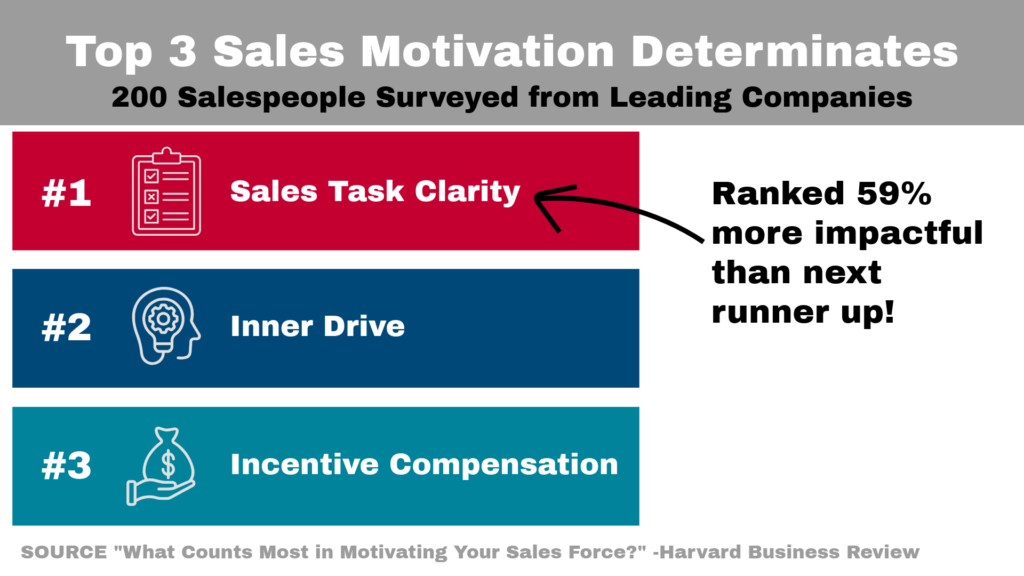A common problem my Fractional Sales Leader colleagues and I see when sales teams are underperforming is that the owner or top executive makes assumptions on what needs to be fixed.
When we enter a client setting, they have usually tried a myriad of solutions, spent significant dollars, and wasted precious time without improving their sales results because they aren’t tackling the right root cause.
Very often, the true breakdown areas aren’t what they appear to be on the surface. Once we put our finger on the underlying vulnerabilities, we can rapidly overcome them.
This article highlights an engagement with a client that encountered a devastating sales downturn due to abrupt market condition changes. While this situation isn’t common, I’m showcasing it because it’s full of learning opportunities that I believe will resonate with other small and mid-sized business executives who are also looking to improve their sales results.
A recent client experienced an industry-specific significant decline in revenue, dropping from $9 million to just below $3 million annually that was caused by the multi-year covid pandemic.
Market conditions were severely impacted by changes in customer spending and purchasing behavior. Long-time customers began reducing their orders and panicked competitors were slashing their margins to stay afloat.
New business opportunities became scarce as the market shifted and the client’s salespeople couldn’t adjust tactics and shift behaviors fast enough.
The owner was convinced the way to combat the challenge was to push his sellers to generate more sales activity. In an effort to provide support, he invested $50k in a robust sales training program to sharpen sales skills with the assumption that stronger closing techniques were also key part of the solution.

The salespeople were already noticeably strained. Leadership was concerned applying more pressure would result in sales turnover, only adding to the chaos. However, top executives saw no other options. The entire company’s future was at stake!
Identifying the Core Problem
As Fractional Sales Leaders, our first step in fixing our clients’ current sales issues is to understand their sales strategy, processes, systems, people resources, and management methodology.
In this case, when my colleague sat down to discuss the situation with the client’s top executive and senior leaders, it was clear they believed the issues were stemming from a complacent and under skilled sales staff. They conceded that the pandemic and economic conditions were tough, but their main competitors hadn’t seemed to have taken as big of a hit as they had.

They also assumed that the new customer buying behavior meant their sales process and entire sales training approach needed to be revamped to match the new market.
After the owner applied months of effort and investments, only to see the sales pipeline continuing to erode, there were also suspicions brewing regarding the capabilities of the sales team.
However, in-depth analysis of the client’s sales performance highlighted stagnant revenue growth despite the salespeople adapting their skills through the considerable training investment and applying various adjustments to their sales approach.
Pushing the salespeople to “work harder” on this platform wasn’t getting them anywhere.
Further investigation revealed that that the real issue was the client’s lack of a clear strategy and a differentiated value proposition. Additionally, loosely defined sales roles and sales culture lacking accountability contributed to underperforming sales results.
Now that their industry had become a “crowded space”, they were being outsold and outperformed.
Implementing Strategic Solutions
There were a variety of foundational areas that needed to be tackled. Top of the list was helping the client redefine their value proposition and unique competitive differentiation. They had become another face in the crowd presenting “me too” solutions.
They needed to get to “why” their customers buy, not “what” they buy.
New positioning was created by members of our fractional sales leadership group guiding the client through our Value Proposition Workshop series that enabled the client to become laser focused on:
- Their ideal customer profile target
- Clarity on what they are offering to their customer(s)
- What problem they are solving
- Why it matters to customer(s)

The client’s new value proposition relayed a promise to their customers that assured delivery of the best possible value. It was designed as a focused and concise statement of how they solve their customer’s problem and designed so that it stood out to the right customers.
Prospects don’t care what you are selling. They only care about what it does for them.
From there, the value proposition output was expanded to capture the client’s competitive positioning statement and key differentiator points for use by the salespeople. These differentiators were packaged into a series of unique advantages backed up by data and case studies.
Turn-key sales tools were developed utilizing the differentiators in the form of outbound sales messaging scripts, pitch decks designed to guide the salespeople on how to deliver the company’s unique story, tools for handling questions and objections – just to name a few.
Next, my fractional sales leader partners built the client’s customer journey map to guide the process of revising their sales team structure. Even the best market positioning and sales tools won’t help if you don’t have the right people in the right seats with clarity on their role and responsibilities.
Once the appropriate sales roles, responsibilities and key accountabilities were defined and implemented, the sales team transformed into a cohesive sales engine.
- Sales Development Representatives (SDRs) focused on prospecting new business.
- Account Managers were assigned to maintain and grow current customer relationships.
- Internal sales mentors were appointed to provide guidance to underperforming sales team members.

This clarity not only corrected misalignment between senior leadership and the salespeople, but it also reduced stress among sales representatives, enhancing their productivity, effectiveness, and overall motivation.
The development of an internal sales mentor program helped senior sales reps who were hesitant to adopt new sales strategies become champions.
Lending their valuable industry knowledge to a better sales system was crucial to lasting success, and it made the tenured sellers proud that their contribution had noticeable impact to the entire results of the company.
By narrowing the focus of each role through applying specific goals and market focus, the sellers were poised to achieve organizational success.
Another key outcome for the customer was a formalized and scalable sales management methodology which became the springboard for activating a more accountable sales culture.
To learn more about what that entailed, check out my previous article called, “How Can I Build an Accountable Sales Culture?”. Key takeaways on this impactful topic are:
- Track stage-based outcomes that illustrate productive sales process progression
- Clearly explain what you expect your team to do and how you will measure progress
- Invest time in 1:1 meetings to ensure your players are given everything they need to succeed
Observing A Sales Transformation
These new strategic solutions yielded immediate transformations within the company’s sales department.
The new sales strategy and sales role restructuring resulted in dramatically more effective selling. The implementation of a more diligent sales management approach propelled results!
As the new processes, systems, and methodologies settled in, the environment shifted towards a more organized and harmonious workplace.
The owner’s stress level and workload dropped significantly, allowing him to dedicate time to strategic leadership rather than being pulled into daily sales problems.

This opened the door to new product innovations and strategic initiatives. This shift demonstrated that a well-functioning sales team could contribute significantly to broader company objectives.
This once devastated company doubled in size within one year of activating their new sales system, surpassing the owner’s initial revenue target. They continue to enjoy double-digit growth and a secure future to this day.
This successful recovery proved pivotal in driving the company to new heights, solidifying its position in the market.
Finding The Correct Root Cause is Key
This client’s transformation underscores the importance of digging deeper than surface-level issues to identify root causes.
By adopting a robust approach to diagnosing and correcting sales problems, the featured client transitioned from a state of chaos to one of confidence and clarity in direction.
Effective sales strategies are not universally applicable; rather, they require tailored approaches that align with the unique characteristics of each business.
As a Fractional VP of Sales, I’m well versed at plugging into environments that have established sales structure and others that are just getting started on their journey.
If you’ve been reflecting on missed opportunities and could use help establishing more predictability and accountability in your sales department, please feel welcome to leverage me as a resource to get you started.
You can reach me at: 321.229.8910 or smuniz@salesxceleration.com
———————————————————————————–
I am part of a national group of Senior Sales Leaders who collaborate to share insights like the examples shown in this article. We formed because of our shared passion to help business leaders exponentially grow their revenue.


